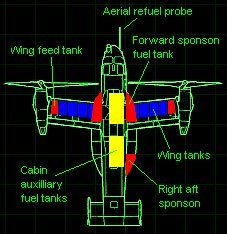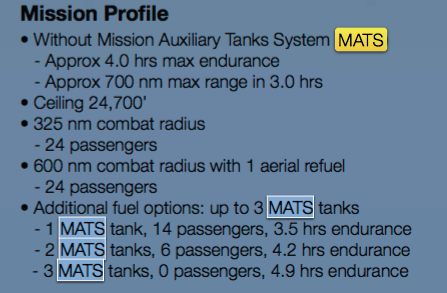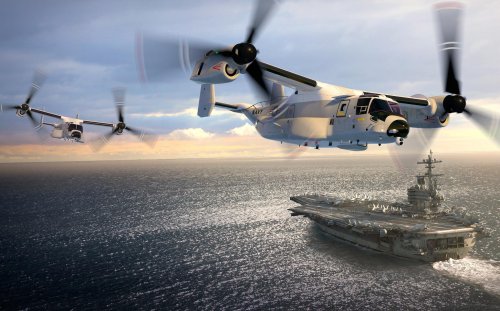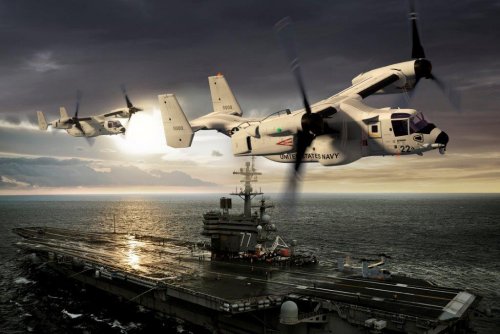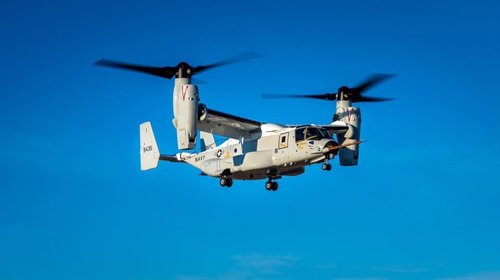Sorry fellas, no COD Viking conversion. :-(
"NAVAIR Details Changes in Navy V-22 Osprey Variant"
by Megan Eckstein
April 2, 2015 11:15 AM
Source:
http://news.usni.org/2015/04/02/navair-details-changes-in-navy-v-22-osprey-variant
"NAVAIR Details Changes in Navy V-22 Osprey Variant"
by Megan Eckstein
April 2, 2015 11:15 AM
Source:
http://news.usni.org/2015/04/02/navair-details-changes-in-navy-v-22-osprey-variant
The Navy is in the early stages of planning its carrier onboard delivery (COD) replacement platform, which will be a baseline MV-22 Osprey plus an extended range fuel system, high-frequency radio and public address system, Naval Air Systems Command (NAVAIR) officials told USNI News this week.
Navy and Marine Corps leadership in January signed a memorandum of understanding (MOU) stating that the Navy would begin buying a variant of the Marines’ tiltrotor platform beginning in Fiscal Year 2018. Since then, spokesman Billy Ray Brown said, NAVAIR has been preparing for an anticipated FY 2016 engineering change proposal (ECP) by conducting an analysis of options for the development of the three changes needed to create the Navy variant.
Though the January MOU called the Navy variant the HV-22, in contrast to the Marines’ MV-22 and the special operations CV-22, Brown said the Navy has not officially named the Navy variant yet.
“In Fiscal 2016, the Navy will begin implementing an engineering change to incorporate the new systems required for the Navy V-22,” Brown said.
“The engineering change will add an extended range fuel system, high-frequency radio and public address system. The engineering change is planned to be incorporated into the V-22 production line with the FY18 procurement of Navy variant V-22s, with deliveries commencing in approximately 2020.”
Brown added that “long-range aerial logistics support capability is critical to seabase operations,” and therefore the longer range fuel capability – and a high frequency radio to support over-the-horizon communications to support these greater distances – would be needed.
The Marines MV-22 variant is already considered a long-range platform – Boeing claims a 428 nautical mile range with 24 Marines onboard, but thanks to aerial refueling the Marines in December 2013 flew more than 3,400 nautical miles from Spain to Djibouti and then another 800 nautical miles to Uganda.
Still, the Navy is seeking a range of 1,150 nautical miles without aerial refueling. Brown said the aircraft would need more fuel to reach that range, which requires trading off other capabilities such as the number of passengers. Whereas the Marines would be using the MV-22 to transport battle-ready Marines and their gear, the Navy variant would be able to go farther but carry less weight while transporting people and equipment.
“The Navy’s minimum requirement for the V-22 Navy variant is 1,150 nm,” Brown said.
“To best support the Navy’s ‘rebalance toward the Asia-Pacific region’ as directed by the Defense Strategic Guidance (January 2012), the COD requires the ability to transport cargo loads at least 1,150 nm under the environmental conditions most commonly found in the Pacific [area of responsibility].”
The public address system would also be needed to communicate with passengers in the back of the aircraft, which is not needed when the MV-22 and CV-22 transports Marines and special operators with their own radios and communications gear.
Brown said there are no deadlines or anticipated costs yet for the engineering work. The Navy is awaiting budget approval before it can move ahead with the ECP in more detail.
After a February hearing on Capitol Hill, Vice Adm. Joseph Mulloy, deputy chief of naval operations for integration of capabilities and resources, told reporters that Marine Corps Reserve pilots who are already trained to operate the MV-22 would join carrier airwings to fly COD missions on the first few deployments once the Navy variant delivers in FY 2020. Marines will train Navy crews to operate and maintain the platform.
Mulloy went on to say this would be a great opportunity for integration as a “naval aviation” force.
“Ultimately the V-22s in the COD mission will have extra tanks and other things on them,” he said.
“What the Marines are interested in is, if it can go longer and fly longer, the Marines may want to get into what I call the Navy variant. The Navy variant may become a naval variant.”
Brown said that the Marine Corps could decide to include any or all of the changes into its MV-22 and would work with Bell-Boeing to arrange those changes. Even if the Marines do not adopt these changes, both services using the Osprey should bring down cost, and Brown said “commonality between the V-22 variants means that there should be no deviation from current MV-22 processes, procedures and required spare parts,” which would create efficiencies in the training and logistics pipelines.

